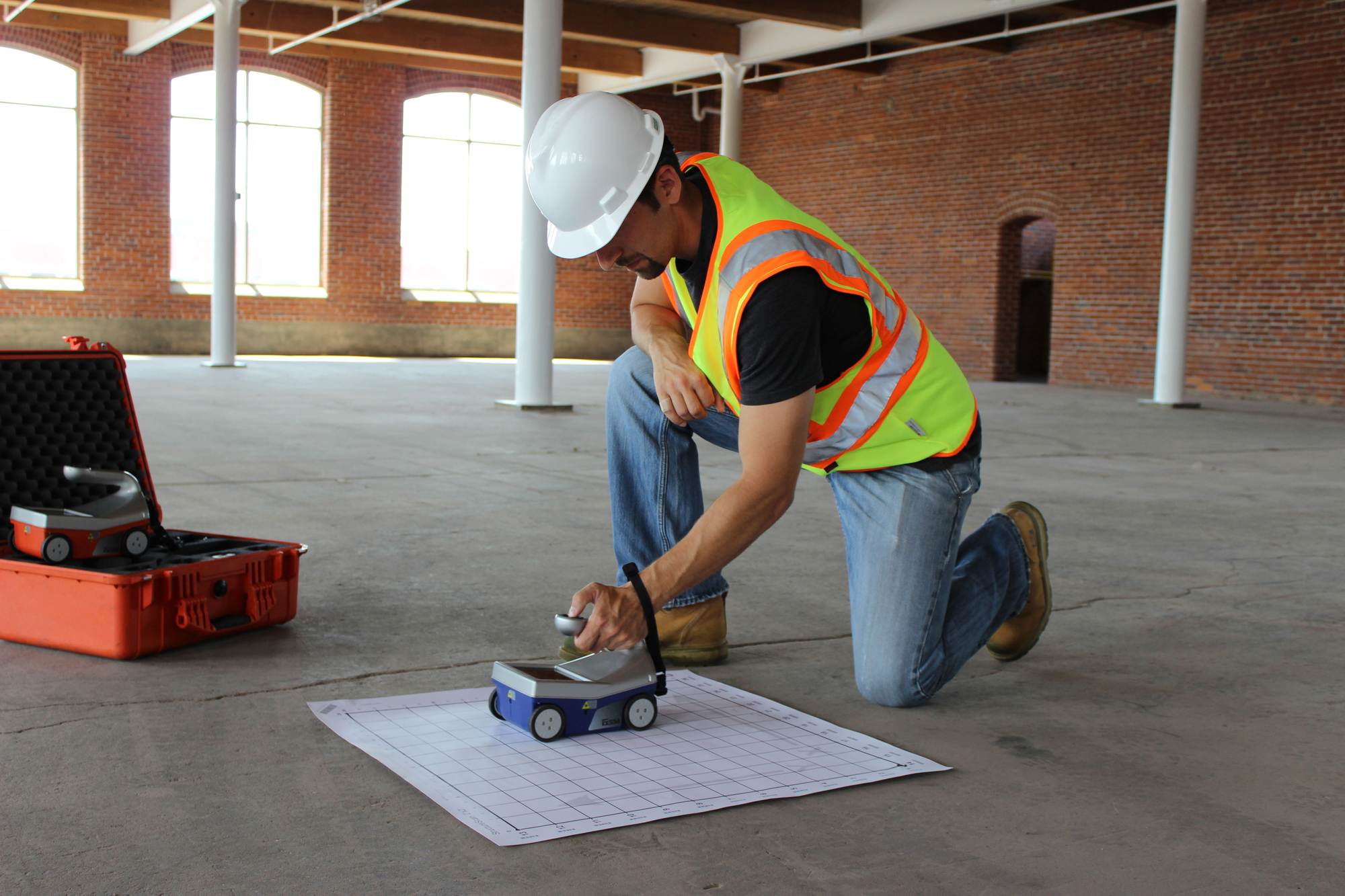Explore RainierGPR Service Areas for Expert Concrete Scanning
Explore RainierGPR Service Areas for Expert Concrete Scanning
Blog Article
Concrete Scanning: A Crucial Step Towards Ensuring Structural Integrity and Safety And Security
In the world of building and construction and facilities maintenance, the relevance of concrete scanning can not be overstated. This meticulous procedure holds the essential to introducing prospective risks hidden under the surface area of apparently strong structures. By using sophisticated innovation and methods, concrete scanning works as a pivotal device in guaranteeing that the integrity and safety and security of structures and bridges are upheld to the highest criteria. However, past its surface-level implications, the duty of concrete scanning extends much deeper than fulfills the eye.
Value of Concrete Scanning
Concrete scanning plays an important role in ensuring the structural stability and safety and security of buildings and framework jobs. By making use of advanced technologies such as ground-penetrating radar (GPR) and electromagnetic induction, experts can non-destructively inspect concrete structures to find possible flaws, gaps, ingrained objects, and reinforcement format. This process allows very early discovery of abnormalities that might endanger the security of a framework, preventing expensive damages and making certain the safety of occupants.
Concrete scanning is especially vital throughout the preparation and building and construction stages of a task. Prior to exploration, reducing, or coring right into concrete, scanning helps recognize the precise locations of rebar, post-tension cable televisions, and various other ingrained components, reducing the threat of accidental hits that might bring about architectural weak points. Furthermore, concrete scanning aids in quality assurance by validating the thickness of concrete covers and discovering any type of disparities that might impact the general sturdiness of the structure. Eventually, purchasing concrete scanning services is not just a positive action to reduce risks but also an essential step towards keeping the lasting safety and security and security of structures and facilities.
Innovation for Concrete Inspection

Advantages of Early Detection
Prompt detection of architectural concerns can substantially minimize threats and ensure the longevity of building jobs. By determining prospective issues early in the building and construction process, stakeholders can take proactive measures to address issues prior to they escalate into bigger and extra pricey issues. One of the key benefits of very early discovery is the avoidance of architectural failings, which can present severe security risks and result in task hold-ups and economic losses.
In addition, very early discovery enables timely repair work and upkeep, which can assist extend the life expectancy of the framework. By resolving problems quickly, building groups can prevent costly fixings or perhaps the requirement for early replacement of architectural elements. This positive approach not only conserves money and time but additionally enhances the general security and longevity of the building and construction job.
In addition, very early detection can boost job planning and decision-making by supplying stakeholders with useful insights right into the condition of the structure. Armed with this information, job managers can make educated selections concerning building materials, timelines, and approaches, resulting in extra efficient and effective job outcomes.
Making Sure Architectural Stability
Making sure the structural stability of a building and construction project is critical to its security and durability. Concrete scanning plays a vital function in making certain architectural security by finding possible issues such as spaces, delamination, or reinforcement corrosion that could compromise the honesty of the structure over time.
By utilizing advanced scanning technologies like ground-penetrating radar (GPR) and electro-magnetic induction, building and construction professionals can non-invasively check concrete frameworks to identify locations of worry under the surface area. This positive method enables the very early discovery of issues or weak points, making it possible for prompt repairs or support to stop structural failings.
Normal concrete scanning throughout different construction stages and throughout the life cycle of a framework can aid preserve its stability, minimize risks, and make certain the safety and security of occupants. By prioritizing structural security through concrete scanning, building and construction projects can boost their resilience and durability, inevitably adding to greater security and longevity.
Stopping Vital Failures
To safeguard against tragic events, thorough tracking and proactive upkeep are basics vital in avoiding important failings within published here architectural structures. Spotting possible concerns before they rise is key to avoid structural failures. Carrying out routine inspections, such as concrete scanning, can disclose covert issues like gaps, splits, or deterioration that might endanger the honesty of a structure. By using innovative scanning technologies like Ground Permeating Radar (GPR) or Concrete X-ray, designers can non-destructively examine the problem of concrete and recognize powerlessness that require reinforcement or fixing - RainierGPR Service Areas.

Final Thought
Finally, concrete scanning plays an essential duty in ensuring structural honesty and safety and security by making use of advanced modern technology for very early discovery of prospective problems. This aggressive technique aids stop essential failings and guarantees the stability of structures. It is essential to prioritize concrete inspection as a basic practice to protect the longevity and safety and security of buildings and infrastructure.
Concrete scanning plays an important function in making sure the structural honesty and security of buildings and framework tasks. In addition, concrete scanning aids in browse around these guys quality control by confirming the thickness of concrete covers and detecting any type of inconsistencies that might impact the overall durability of the framework. Concrete scanning plays a critical duty in ensuring architectural security by discovering possible problems such as voids, delamination, or support corrosion that might compromise the integrity of the framework over time.

In verdict, concrete scanning plays an essential duty in making sure architectural honesty and safety and security by using sophisticated innovation for very early discovery of potential issues.
Report this page